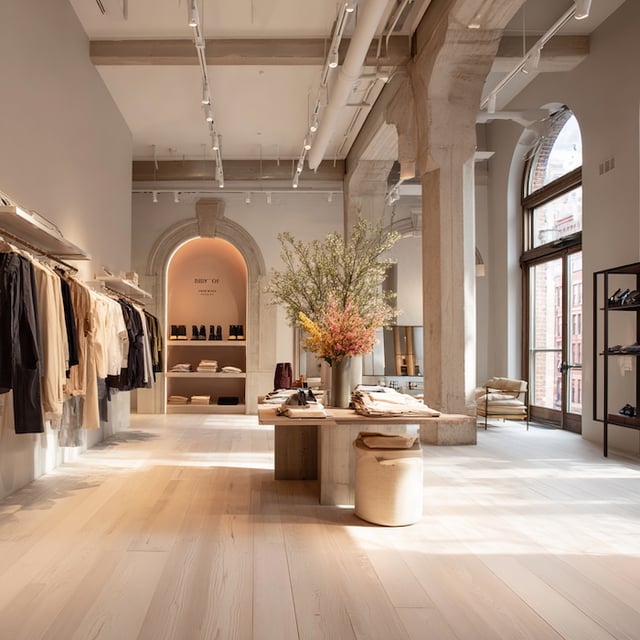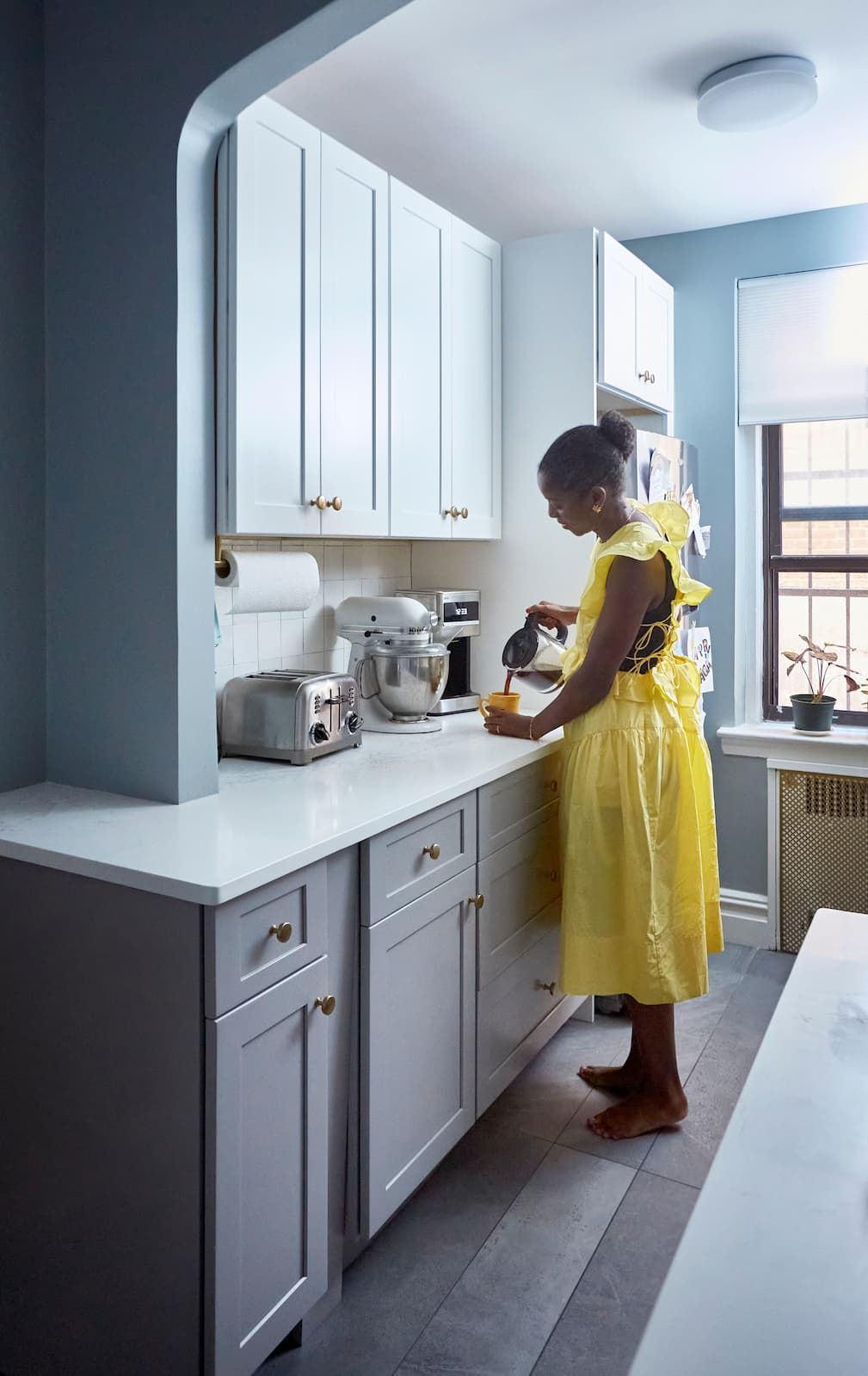
Commercial
Office Bathroom Refurbishment and Design Ideas
12.03.2025


In This Article
A thoughtful store refurbishment can spark renewed energy, influence shopping habits, and reflect a brand’s unique perspective in ways that generic spaces never can. For independent retailers, remodeling is a chance to address persistent space limitations or missed opportunities—and to create an environment that serves both practical needs and brand aspirations.
From a storefront remodel to a full overhaul, the right guidance and expertise make all the difference when it comes to creating lasting value and a space shoppers genuinely remember.
Block Renovation connects independent retailers with experienced retail store remodeling contractors in every region we serve, from New York to the Bay Area and numerous communities in between. Our approach prioritizes quality at every stage—each contractor in the Block network is selected for their skill, professionalism, and strong communication. This vetting process is thorough, emphasizing not just craftsmanship, but reliability and the ability to problem-solve throughout a project.
Whether the project involves a full storefront remodel or targeted store refurbishment, our team can help find qualified professionals who deliver results with care and respect for both the space and the schedule. With Block, retailers can plan with confidence, knowing the team in place brings as much integrity to the process as to the finished product.
Deepening the understanding of your space begins with listening—to both staff observations and real customer feedback. Patterns of frustration, confusion, or delight can be found in survey responses, quick feedback forms, and regular walkthroughs with employees. There’s even customer flow management software which observes and analyzes how visitors circulate your store to pinpoint weak spots. Common retail store issues a strategic remodel can help address include:
Product displays are where vision meets practicality: the right presentation shapes how customers move, pause, and ultimately connect with what’s on offer. Shelving, racks, and displays set the tone for everything from initial impression to final sale. As you consider retail store remodeling, think carefully about both what your customers need and how your brand wants to be perceived:
How can lighting and finishes strategically draw the eye? Layered lighting, such as accent spotlights above specialty displays or warm LED strips along shelving, can draw attention to hero products while setting the right mood for different product categories, whether you’re showcasing luxury gifts or practical essentials.
Space is a silent ambassador for your business. Every color, material, and fixture is an opportunity to reinforce identity and forge an emotional connection that lasts well beyond a transaction. Therefore, your brand identity should guide every element of your retail store’s remodel. For example:
Staying relevant as an independent retailer often means looking beyond your own walls. Competitors in your neighborhood—or even similar shops further afield—are constantly updating their spaces to attract new visitors, keep regulars engaged, and set themselves apart. An effective store refurbishment today often borrows from what’s working elsewhere, but adds original twists that feel authentic to your brand and local market. When planning your own retail store remodeling project, notice what makes shoppers linger, share on social media, or come back for more.
Choose resilient, commercial-grade materials to maintain a professional, welcoming appearance even after years of daily activity. High-traffic spaces need finishes that stand up to rolling display racks, delivery carts, and the constant movement of customers.
Consider, for example, a boutique that invests in polished concrete or luxury vinyl tile for its sales floor. These surfaces withstand scuffs from shoe traffic, dragged shelving, and the occasional spill, looking as sharp in year three as on opening day. If your shop features dressing rooms, opting for solid-surface partitions ensures that foundation makeup, coffee drips, and bag straps don’t leave lingering marks. On walls, commercial-grade paints with scrubbable finishes let you wipe away smudges and fingerprints quickly, preserving a crisp and fresh shopping environment with minimal effort.
The visual impression of cleanliness communicates care, trustworthiness, and attention to detail. Choosing the right surfaces and layouts at the remodeling stage makes ongoing cleaning quick and thorough.
Quartz or solid-surface counters at checkout resist staining from ink, pen, or spilled coffee, and can be sanitized in seconds between customers. Display cases that hide wires and cables reduce dust buildup and let staff sweep or mop beneath fixtures effortlessly, keeping your store looking organized and spotless. Consider incorporating baseboards with moisture-resistant finishes in the stockroom.
Your storefront window is often the only invitation you get to pull in a passerby. Maximize the space’s potential by blending visual excitement with adaptable infrastructure during your store’s remodel.
Adjustable lighting tracks let you quickly shift the spotlight from a holiday promotion to a new seasonal collection, keeping the story relevant and eye-catching at any time of year. Raised platforms or modular risers let you quickly reimagine the layout, making it simple to introduce themed “vignettes” that highlight multiple products in a cohesive scene. Don’t underestimate the effect of creative signage: a handwritten chalkboard for daily arrivals or a rotating artist’s backdrop can provide a refresh at little cost or effort.
Behind-the-scenes organization is essential for a calm and clutter-free sales floor. Built-in drawers under apparel tables, under-bench storage at fitting rooms, or custom cubbies in checkout counters store extra inventory, packaging, or point-of-sale materials without encroaching on the customer experience.
Other examples? In book, record, or specialty stores, integrating storage into mid-floor displays allows staff to quickly restock bestsellers or featured products. In a flower or gourmet shop, hidden under-counter refrigeration keeps delicate items close at hand without spoiling the shop’s aesthetic.
Smooth customer movement is critical for both shopping enjoyment and store profitability. Bottlenecks—like tight corners near checkout or displays blocking popular items—can frustrate customers and limit sales.
During a remodel, walk the space as a customer would: track the journey from front door to flagship product, through fitting zones, and over to checkout. If lines regularly block access to displays, consider moving registers to the perimeter or investing in flexible queuing systems that snake along underutilized corridors.
For longer shops, mirrored or open sight lines help pull visitors deeper into the store. Signage, floor markings, and inviting displays can subtly prompt customers to keep exploring, even on busy days.
A checkout design that welcomes everyone ensures no shopper feels excluded or rushed. Lowered, ADA-compliant counters position staff and customers at eye level, support wheelchair and stroller access, and provide space for signing receipts or repacking purchases with ease. For smaller spaces, a mobile POS station can act as a second register during peak times or events. Ample lighting above the counter and clearly separated purchase and bagging areas also support both efficient transactions and a sense of ease for every customer.
Lighting is one of the most strategic tools in modern retail design. Flexible, layered lighting keeps the mood dynamic and lets products shine at any time of day. For example, ambient ceiling lights produce overall brightness, task lighting at checkout and fitting rooms helps staff and customers see clearly, and adjustable spotlights draw eyes to featured displays, seasonal products, or event setups. Lighting on dimmer switches allows for mood shifts—bolder and brighter for busy daytime foot traffic, softer for evening events or private shopping appointments. Color-adjustable LEDs even let you create different vibes for different brand moments.
Smart design integrates technology without making it feel cold or impersonal. The right updates can make operations smoother and the shopping experience more memorable. A mobile POS on an iPad, for instance, means staff can check out customers anywhere—great for events, sidewalk sales, or conducting transactions when lines at the main register are long.
QR codes by featured displays let shoppers access product stories, care tips, or demonstration videos right from their phone. Discreetly mounted security systems provide peace of mind without sacrificing ambiance, and digital loyalty sign-ups at checkout streamline returning visits.
Restrooms are often overlooked during store remodeling, but they play a significant role in shaping the overall experience. A clean, well-designed bathroom reinforces a sense of care and professionalism, while a dim, dated restroom can suggest neglect and leave a lasting, less-than-positive impression. Including the bathroom in your design plans shows that every facet of the store has been considered—right down to the smallest details. Bathroom remodeling tips for retailers include:
An interior designer with a strong background in retail store remodels brings in-depth knowledge of consumer psychology and current industry trends. They understand how subtle changes in layout, lighting, and color can influence how customers feel and behave in your space.
Hiring an interior designer can also help you avoid common pitfalls, from inefficient traffic flow to impractical finishes that won’t hold up under real-world use. Their recommendations are grounded both in aesthetics and in creating a store that truly supports your business goals. Most importantly, an experienced designer can translate your vision into an environment that stands out, feels inviting, and keeps customers coming back.
Every decision in a retail store remodel shapes the way your space feels, functions, and supports your goals. Block Renovation brings together trusted expertise, high standards, and a network of qualified contractors to help independent retailers create inviting, efficient, and memorable stores.
With a clear direction and a dedicated team behind you, the remodeling process can be an empowering one. Every detail, from initial planning to the finishing touches, is managed with care so you can focus on what matters most: growing your business and welcoming more customers through your doors.

Written by Block Renovation

Renovate confidently with Block
Easily compare quotes from top quality contractors, and get peace of mind with warranty & price protections.
Thousands of homeowners have renovated with Block

4.5 Stars (100+)

4.7 Stars (100+)

4.5 Stars (75+)

Commercial
Office Bathroom Refurbishment and Design Ideas
12.03.2025

Commercial
Grocery Store Renovation Checklist & Expert Remodel Ideas
11.22.2025

Commercial
Convenience Store Design: Interiors & Exteriors
11.22.2025

Commercial
Fit Out Contractors - Finding & Vetting Specialists
11.22.2025

New York
NYC Office Renovations: Contractors & Remodeling Tips
11.14.2025
Renovate confidently